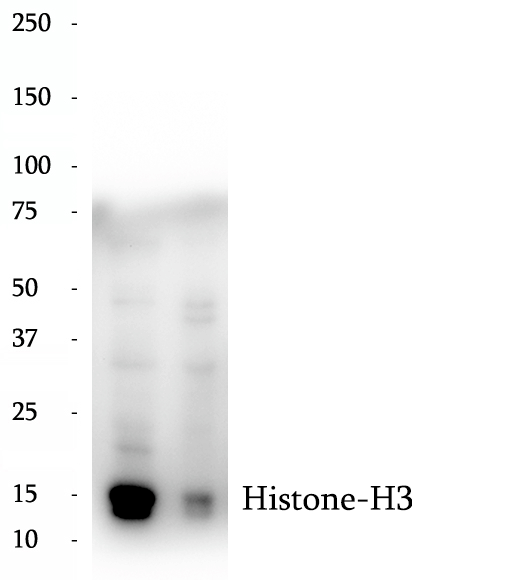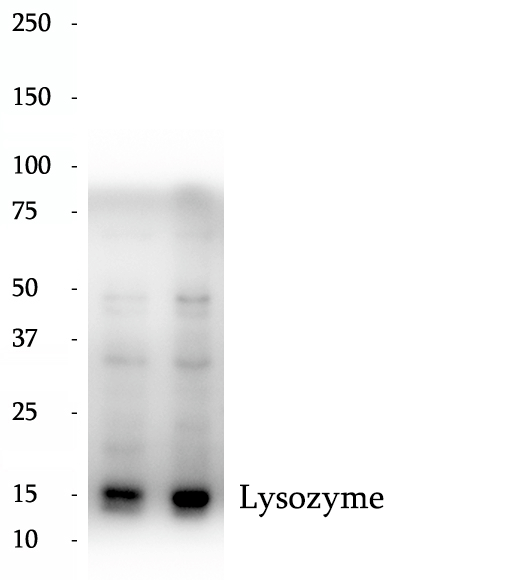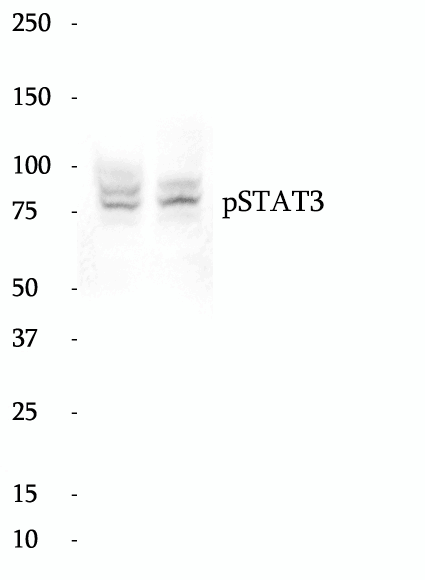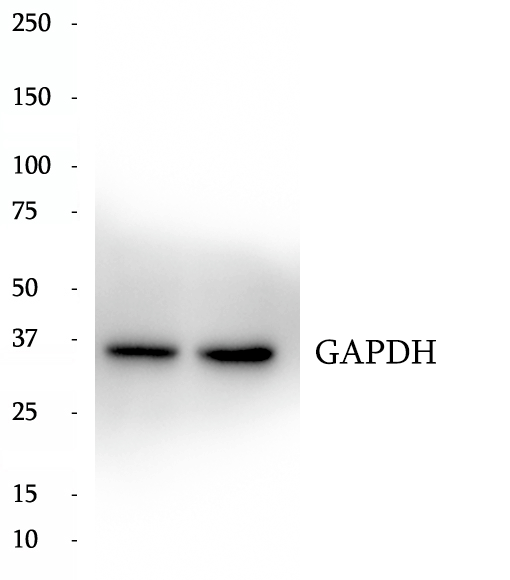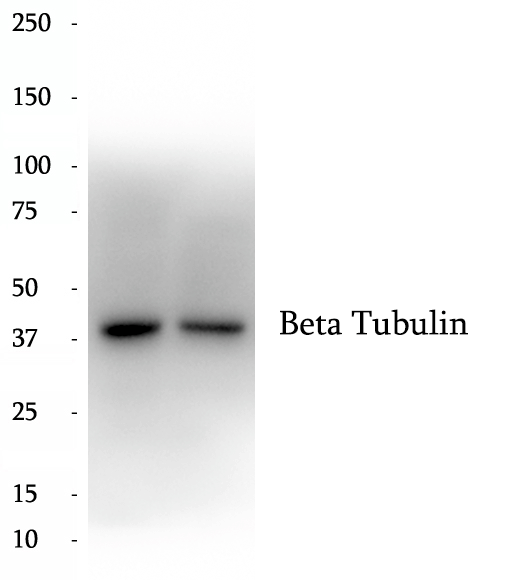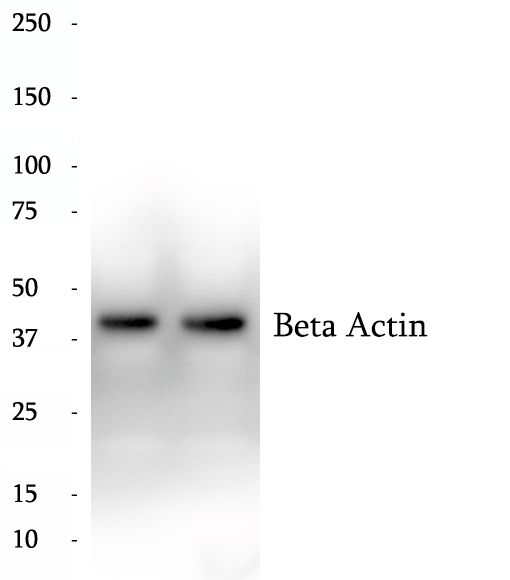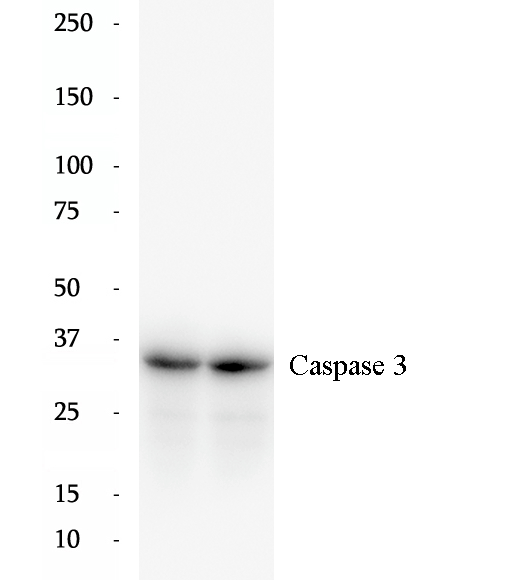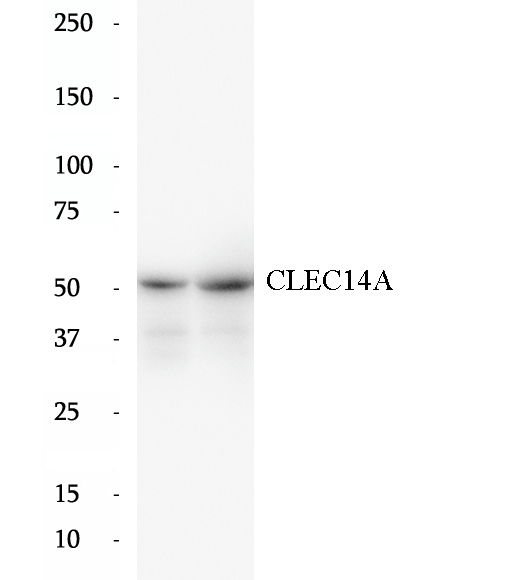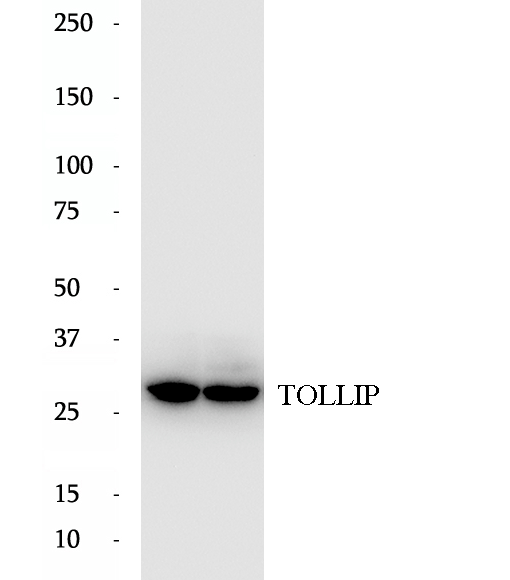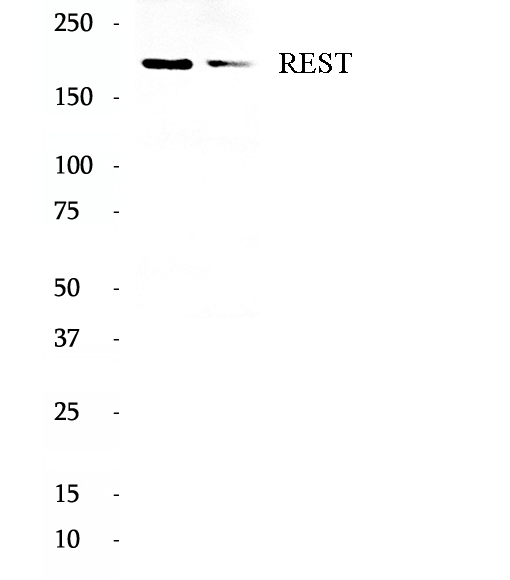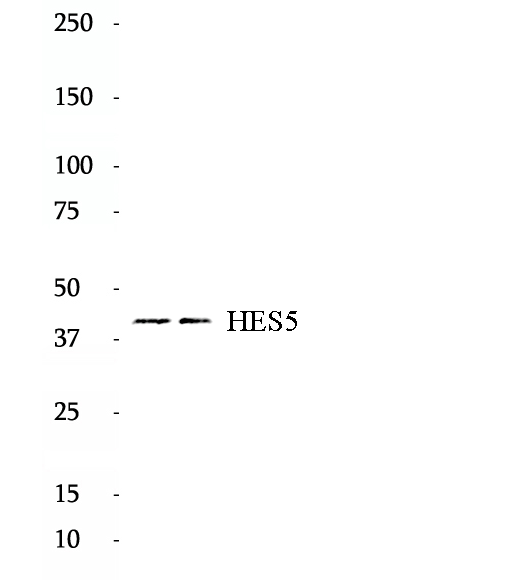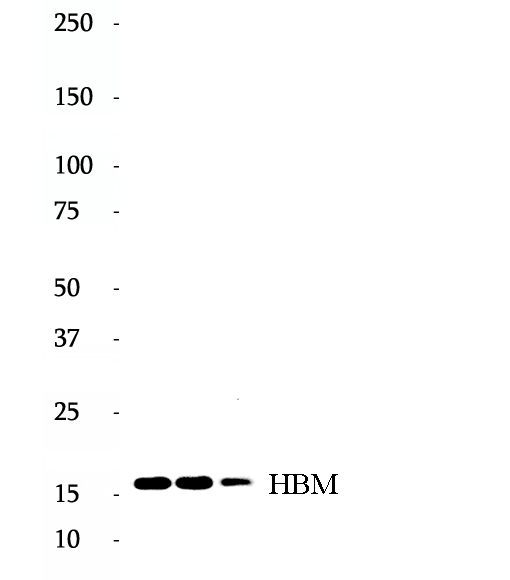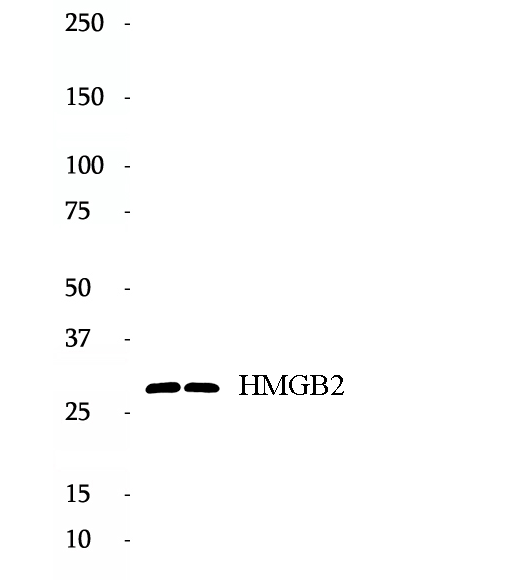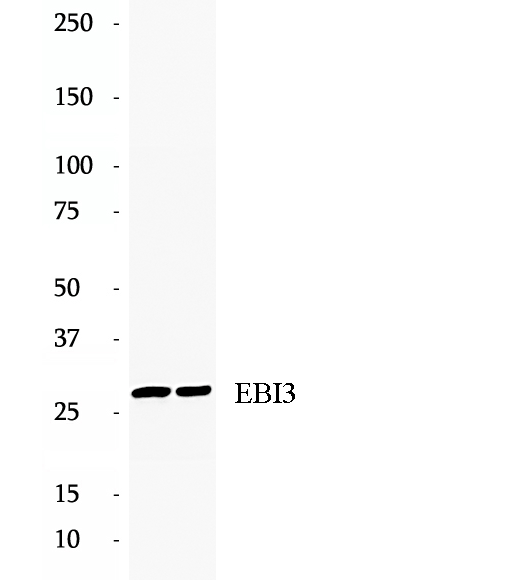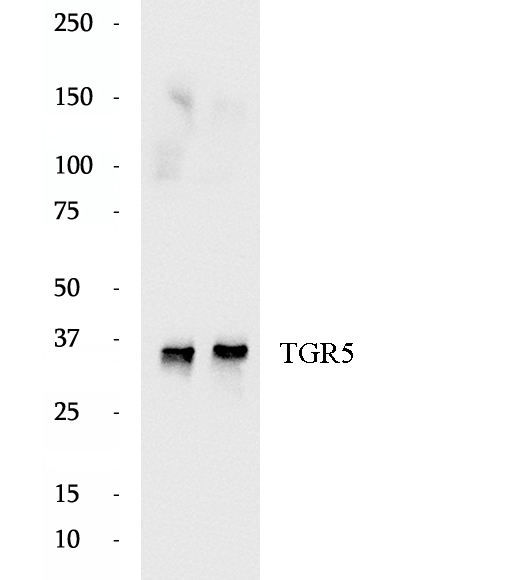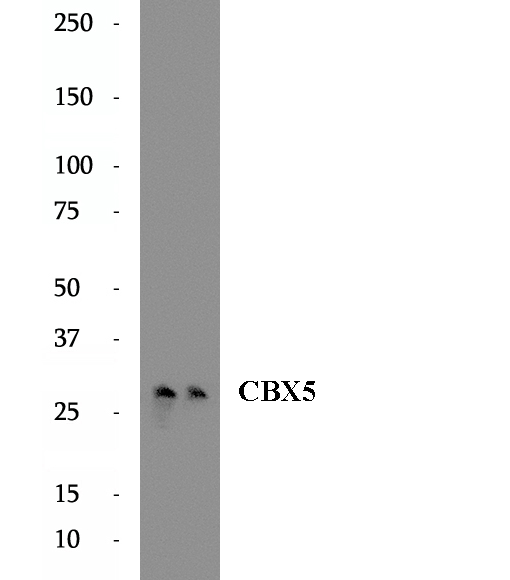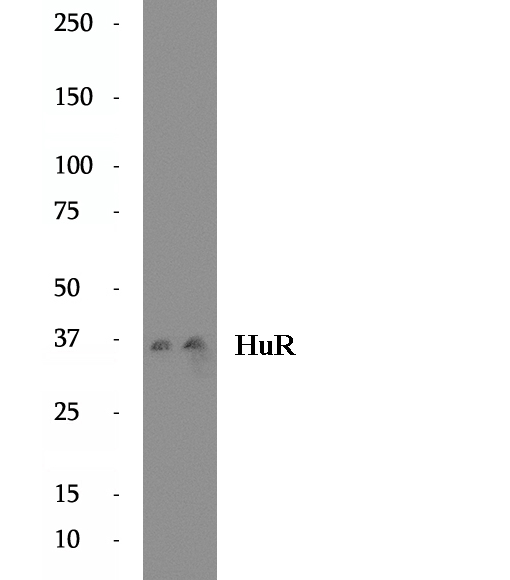|
BP62159
|
Anti-Histone-H3 antibody
|
|
|
|
|
Histone-H3, histone cluster 2, H3a is the core component of nucleosome. Nucleosomes wrap and compact DNA into chromatin, limiting DNA accessibility to the cellular machinery which requires DNA as a template. Histones thereby play a central role in transcription regulation, DNA repair, DNA replication and chromosomal stability. DNA accessibility is regulated via a complex set of post-translational modifications of histones, also called histone code, and nucleosome remodeling. Histone-H3 is expressed during S phase; then expression strongly decreases as cell division slows down during the process of differentiation.
|
|
BP62692
|
Anti-Lysozyme antibody
|
|
|
|
|
LYZ (Lysozyme C) is also named as LZM and belongs to the glycosyl hydrolase 22 family. It catalyzes the hydrolysis of the bacterial cell wall beta (1-4) glycosidic linkages between N-acetylmuramic acid and N-acetylglucosamine. In tissues and body fluids this protein is associated with the monocyte-macrophage system and enhance the activity of immunoagents. LYZ is capable of both hydrolysis and transglycosylation; it shows also a slight esterase activity. Defects in LYZ are a cause of amyloidosis type 8 (AMYL8). The full length protein has a signal peptide with 18 amino acid.
|
|
BP65431
|
Anti-Phospho-STAT3 antibody
|
|
|
|
|
Signal transducer and activator of transcription 3 (acute-phase response factor) (STAT3, synonyms: APRF, FLJ20882, MGC16063) is a member of the STAT protein family. In response to cytokines and growth factors, STAT family members are phosphorylated by the receptor associated kinases, and then form homo- or heterodimers that translocate to the cell nucleus where they act as transcription activators. STAT3 is activated through phosphorylation in response to various cytokines and growth factors including IFNs, EGF, IL5, IL6, HGF, LIF and BMP2. STAT3 mediates the expression of a variety of genes in response to cell stimuli, and thus plays a key role in many cellular processes such as cell growth and apoptosis. The small GTPase Rac1 has been shown to bind and regulate the activity of STAT3. This antibody is a rabbit polyclonal antibody raised against residues near the N terminus of human STAT3. STAT3 exists three isoforms and the molecular weight of each isoform respectively is 83 kDa, 87 kDa and 88 kDa.
|
|
BP61854
|
Anti-GAPDH antibody
|
|
|
|
|
Glyceraldehyde-3-phosphate dehydrogenase (GAPDH) catalyzes the phosphorylation of glyceraldehyde-3-phosphate during glycolysis. GAPDH participates in nuclear events including transcription, binding RNA, RNA transportation, DNA replication, DNA repair and apoptosis. Being stably and constitutively expressed at high levels in most tissues and cells, GAPDH is considered a housekeeping protein. It is widely used as a control for RT-PCR and also loading control in electrophoresis and Western blotting. GAPDH is normally expressed in cellular cytoplasm or membrane, but can occasionally translocate to the nucleus after the addition of post-translational modifications such as S-nitrosylation. This antibody is raised against full length GAPDH of human origin. It can recognize the 36 kDa GAPDH protein in most cells/tissues. In addition, a band below 36 kDa can always be detected as the isoform or spliced product of GAPDH. Please note that some physiological factors, such as hypoxia and diabetes, increase GAPDH expression in certain cell types.
|
|
BP60474
|
Anti-Beta Tubulin antibody
|
|
|
|
|
There are five tubulins in human cells: alpha, beta, gamma, delta, and epsilon. Tubulins are conserved across species. They form heterodimers, which multimerize to form a microtubule filament. An alpha and beta tubulin heterodimer is the basic structural unit of microtubules. The heterodimer does not come apart, once formed. The alpha and beta tubulins, which are each about 55 kDa MW, are homologous but not identical. Alpha, beta, and gamma tubulins have all been used as loading controls. Tubulin expression may vary according to resistance to antimicrobial and antimitotic drugs.
|
|
BP60468
|
Anti-Beta Actin antibody
|
|
|
|
|
Beta Actin, also named as ACTB and F-Actin, belongs to the actin family. Actins are highly conserved globular proteins that are involved in various types of cell motility and are ubiquitously expressed in all eukaryotic cells. At least six isoforms of actins are known in mammals and other vertebrates: alpha (ACTC1, cardiac muscle 1), alpha 1 (ACTA1, skeletal muscle) and 2 (ACTA2, aortic smooth muscle), beta (ACTB), gamma 1 (ACTG1) and 2 (ACTG2, enteric smooth muscle). Beta and gamma 1 are two non-muscle actin proteins. Most actins consist of 376aa, while ACTG2 (rich in muscles) has 375aa and ACTG1 (found in non-muscle cells) has only 374aa. Beta actin has been widely used as the internal control in RT-PCR and Western Blotting as a 42-kDa protein. However, the 37-40, 31, 15kDa cleaved fragment of beta actin can be generated during apoptosis process. This antibody was generated against N-terminal region of human beta actin protein and can cross-react with other actins. (9173887, 11217076, 10229193 )
|
|
BP63501
|
Anti-PERK/EIF2AK3 antibody
|
|
|
|
|
PERK, also named as EIF2AK3 or PEK, belongs to the protein kinase superfamily, Ser/Thr protein kinase family and GCN2 subfamily. It acts potentially as a metabolic sensor in the INS-secreting beta-cells to modulate the trafficking and quality control of pro-INS in the ER relative to the physiological demands for circulating INS. PERK and EIF2AK4 also have a functional role on regulating translation under non-stressed conditions, apart from their long established roles as stress kinases. Defects in EIF2AK3 are the cause of Wolcott-Rallison syndrome (WRS). The molecular mass of PERK is 125 kDa and can be detected as 140 kDa or 170 kDa due to some modifications such asglycosylation and phosphorylation. This antibody is specific to PERK.
|
|
BP60672
|
Anti-Caspase 3 antibody
|
|
|
|
|
Caspases, a family of endoproteases, are critical players in cell regulatory networks controlling inflammation and cell death. Initiator caspases (caspase-2, -8, -9, -10, -11, and -12) cleave and activate downstream effector caspases (caspase-3, -6, and -7), which in turn execute apoptosis by cleaving targeted cellular proteins. Caspase 3 (also named CPP32, SCA-1, and Apopain) proteolytically cleaves poly (ADP-ribose) polymerase (PARP) at the beginning of apoptosis. Caspase 3 plays a key role in the activation of sterol regulatory element binding proteins (SREBPs) between the basic helix-loop-helix leucine zipper domain and the membrane attachment domain. Caspase 3 can also form heterocomplex with other proteins and performs the molecular mass of 50-70 kDa. This antibody can recognize p17, p19 and p32 of Caspase 3.
|
|
BP60971
|
Anti-CLEC14A antibody
|
|
|
|
|
CLEC14A is a single-pass type I transmembrane protein whose extracellular domain consists of a C-type lectin-like domain (CTLD), a series of EGF-like domains, and a sushi-like domain. CLEC14A is a member of the C-type lectin domain superfamily that also includes endosialin, thrombomodulin and CD93. It has been reported that CLEC14A is specifically expressed in endothelial cells and mediates cell to cell adhesion. CLEC14A may be involved in tumor angiogenesis.
|
|
BP64938
|
Anti-TOLLIP antibody
|
|
|
|
|
TOLLIP (Toll interacting protein), is an inhibitory adaptor protein. Tollip is a negative regulator of IL-1R and Toll-like receptors signalling pathway, involved in inflammatory immune response and inhibiting IRAK1 phosphorylation and kinase activity. The TOLLIP-dependent selective autophagy pathway plays a role in clearance of cytotoxic polyQ proteins aggregates.
|
|
BP61517
|
Anti-ELAC2 antibody
|
|
|
|
|
Putative prostate cancer susceptibility protein (ELAC2) is encoded by HPC2/ELAC2 gene. HPC2 is a potential prostate cancer predisposition gene playing a role in genetic susceptibility to prostate cancer.It is a zinc phosphodiesterase, which displays some tRNA 3'-processing endonuclease activity and probably involved in tRNA maturation, by removing a 3'-trailer from precursor tRNA.Defects in ELAC2 may be a cause of susceptibility to prostate cancer (PC).
|
|
BP64090
|
Anti-REST antibody
|
|
|
|
|
REST also named as NRSF or X2 box repressor is a 1097 amino acid protein, which contains 9 C2H2-type zinc fingers. REST as transcriptional repressor binds neuron-restrictive silencer element (NRSE) and represses neuronal gene transcription in non-neuronal cells. Repressor element 1 (RE1) silencing transcription factor (REST), is widely expressed during embryogenesis, and plays a strategic role in terminal neuronal differentiation. The molecular weight of REST is 121 kDa, but REST was detected 200kDa by western blot in our result, which is similar to the one article.
|
|
BP61015
|
Anti-CNTN1 antibody
|
|
|
|
|
Contactin-1 (CNTN1), also known as Glycoprotein gp135 or Neural cell surface protein F3, is a neuronal cell adhesion molecule of the immunoglobulin superfamily. It consists of six Ig domains, four fibronectin-like motifs, and a glycosylphosphatidylinositol (GPI)-moiety. Expressed by the central and peripheral neurons, CNTN1 contributes to the formation and function of neuronal connections. It plays a role in axon extension and formation of septate-like junctions between axons and myelinating glial cells. In addition, acting as a ligand for Notch, CNTN1 initiates a NOTCH/DTX1 signaling pathway that promotes oligodendrocyte maturation and myelination.
|
|
BP62131
|
Anti-HES5 antibody
|
|
|
|
|
HES5, also known as bHLHb38, has a particular type of basic domain (presence of a helix-interrupting proline) that binds to the N-box (CACNAG), rather than the canonical E-box (CANNTG). HES5 is expressed in fetal heart and brain tumors. HES5 as a transcriptional repressor of genes that require a bHLH protein for their transcription and plays an important role as neurogenesis negative regulator. HES5 is detected with molecular weight of 41 kDa according to the publication.
|
|
BP62090
|
Anti-HBM antibody
|
|
|
|
|
HBM, also named as HBAP2, belongs to the globin family. The antibody is specific to HBM.
|
|
BP62174
|
Anti-HMGB2 antibody
|
|
|
|
|
High mobility group protein B2 (HMGB2) belongs to a family of highly conserved proteins that contain HMG box domains (11246022,14871457). All three family members (HMGB1, HMGB2, and HMGB3) contain two HMG box domains and a C-terminal acidic domain. HMGB1 is a widely expressed and highly abundant protein (14871457). HMGB2 is widely expressed during embryonic development, but it is restricted to lymphoid organs and testis in adult animals (11262228). HMGB3 is only expressed during embryogenesis (9598312). While expression varies, the biochemical properties of the different family members may be indistinguishable. The HMG box domains facilitate the binding of HMGB proteins to the minor groove of DNA, which results in local bending of the DNA double helix. HMGB proteins are recruited by and help facilitate the assembly of site-specific DNA binding proteins to their cognate binding sites in chromatin. For example, HMGB1 and HMGB2 facilitate the binding of Hox proteins, Oct proteins, p53, Rel proteins, and steroid hormone receptor proteins to their target gene promoters (11246022,14871457). Furthermore, HMGB2 interacts with RAG1 to facilitate RAG complex binding to the recombinant signal sequence (RSS) and stimulate DNA-bending and subsequent VDJ cleavage at antigen receptor genes (19317908,10490593). In addition to their functions in the nucleus, HMGB proteins play a significant role in extracellular signaling associated with inflammation. HMGB2 is secreted by myeloid cells and promotes proliferation and migration of endothelial cells by binding to the receptor for advanced glycation endproducts (RAGE) (19811285 ). Research studies have shown that HMGB2 overexpression in hepatocellular carcinoma is associated with poor prognosis and shorter survival time (20851854).This antibody recognizes the phosphorylation form of HMGB2 protein. HMGB2 are highly homologous 80% 25 to 30 kDa proteins that belong to the HMGB subgroup of the HMG proteins.
|
|
BP61461
|
Anti-EBI3 antibody
|
|
|
|
|
EBI3, a 34-kDa secreted glycoprotein, is a subunit in 2 distinct heterodimeric cytokines: IL-27 and IL-35. IL-27, composed of p28 (IL-27) and EBI3, can trigger signaling in T cells, B cells, and myeloid cells. IL-35, composed of EBI3 and the ubiquitously expressed p35 subunit of IL-12, is an inhibitory cytokine involved in regulatory T-cell function. EBI3 plays a role in regulating cell-mediated immune responses.
|
|
BP65436
|
Anti-TGR5 antibody
|
|
|
|
|
The G protein-coupled bile acid receptor 1 (GPBAR1) also known G-protein coupled receptor 19 (GPCR19), membrane-type receptor for bile acids (M-BAR) or TGR5, a transmembrane G protein-coupled receptor for bile acids, is widely expressed in multiple tissues in humans and rodents. GPBAR1 has been thought to play an important role in bile homeostasis, metabolism and inflammation.
|
|
BP60702
|
Anti-CBX5 antibody
|
|
|
|
|
Chromobox protein homolog 5 (CBX5), also named heterochromatin protein 1 alpha (HP1a), is a highly conserved nonhistone protein involved in heterochromatin formation and gene silencing in different species including humans.HP1a is a Component of heterochromatin that recognizes and binds histone H3 tails methylated at 'Lys-9' (H3K9me), leading to epigenetic repression. In contrast, it is excluded from chromatin when 'Tyr-41' of histone H3 is phosphorylated (H3Y41ph). It may interact with lamin-Breceptor. HP1a is involved in the formation of functional kinetochore through interaction with MIS12complex proteins. Phosphorylation of HP1 and LBR during interphase mitosis may be responsible for some of the alterations in chromatin organization and nuclear structure which occur at various times during the cell cycle.The HP1a was expressed in nucleus and associates specifically with chromatin during metaphase and anaphase.Recent studies have shown that HP1a is present at many euchromatic sites and positively regulates euchromatic gene expression through RNA transcript association and interaction with hnRNPs in Drosophila (19798443). This antibody is a rabbit polyclonal antibody raised against a full-length human HP1A protein,and can reacts with the 28kd HP1A protein.
|
|
BP62268
|
Anti-HuR antibody
|
|
|
|
|
ELAVL1, also named as HUR, belongs to the RRM elav family. It is involved in 3'-UTR ARE-mediated MYC stabilization. ELAVL1 binds avidly to the AU-rich element in FOS and IL3/interleukin-3 mRNAs. In the case of the FOS AU-rich element, ELAVL1 binds to a core element of 27 nucleotides that contain AUUUA, AUUUUA and AUUUUUA motifs.
|
